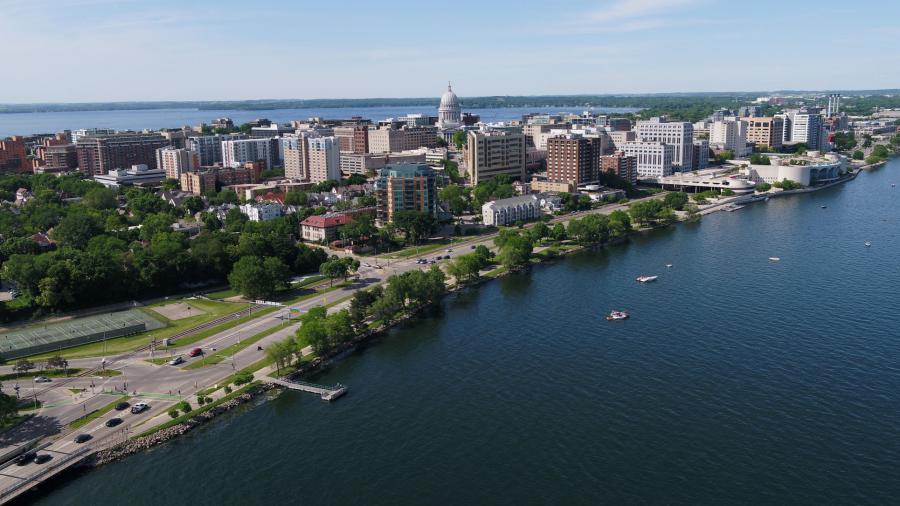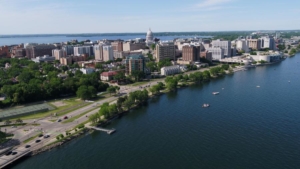Before environmental concerns became a staple of urban planning, industrial sites dominated waterfront properties in American cities. For decades, factories used urban waterways to dispose of pollutants. As environmental awareness grew, however, those sites were abandoned, but the toxic aftermath lingered.
New funding and technology are both available now to remedy that risk, and the country’s focus on resilience has led planning officials to discover a new and very attractive potential in local waterfronts. Now federal, state and local governmental entities are collaborating to convert once-toxic riverfront properties into lucrative recreational assets.
At the federal level, the Federal Emergency Management Agency (FEMA) is a principal funder of waterfront redevelopment projects. The agency has several programs that offer financial support to projects that develop waterfront properties and enhance sustainability. The agency is currently accepting funding requests and awards (which last year amounted to a total of $1.2 billion) and will be announced later this year.
Many states have also established funding support for waterfront properties. In New York, a grant program has been announced for $100 million in funding to support 10 separate regional redevelopment projects and a large majority of them are focused on the redevelopment of waterfront properties.
In addition, many cities now have their own measures in place to fund waterfront projects. In Austin, Texas, city leaders have created a tax increment reinvestment zone (TIRZ) program. This financing tool allows the city to collect taxes on real estate improvements within designated waterfront areas. The tax revenue is then put back into the zone to improve other segments of its infrastructure. City officials anticipate that the new TIRZ designation will provide an estimated $354 million in tax revenue to support improvements to the South-Central Waterfront property.
A large upcoming waterfront project in Madison, Wisc., will have a cumulative cost of somewhere between $150 million and $250 million. This project will be designed to reimagine a Lake Monona Waterfront property. It will focus on the development of 2 miles of shoreline and 17 acres of city lakefront property, and the initiative will include extended piers, enhanced landscaping, additional parks and outdoor event areas.
In Kentucky, a riverfront development project related to property in the city of Covington has been tagged with a cost projection of more than $70 million. The city owns 23 acres of property between the Ohio River and a prominent event center and city leaders want to launch a sweeping revitalization of the riverfront. Initial phases of work have been scoped to ensure that utilities and infrastructure are in place and design and engineering work will be finalized early in 2023. Components in the project’s planning documents include construction of an office building, a new hotel, residential units, a levee park, outdoor event space and the possible expansion of the adjacent event center.
City leaders in Jacksonville, Fla., have announced a $100 million project that replaces the city’s Museum of Science & History and includes several additional projects along the St. John’s River. Plans include construction of a 130,000-square-foot museum on the river’s north bank, a riverwalk trail and park space that connects to other nearby riverfront attractions.
One of the adjoining projects in Jacksonville is the $26.4 million Shipyards West Park project. Planning documents outline a restoration effort that will focus on underdeveloped riverfront property. The objective will be to connect the property to the new museum’s site on the north bank of the St. John’s River.
Officials in Detroit, Mich., have announced a partnership with the Detroit Riverfront Conservancy and a local non-profit to launch an expansive riverfront redevelopment initiative that carries a cost estimate of $350 million. The newly formed Unified Greenway Partnership will serve as the oversight authority for two major projects designed to revitalize the city’s riverfront property. The largest of the projects will impact the Joe Louis Greenway by connecting the 27.5-mile greenway to riverfront parks and neighborhoods with multi-use trails and protected bike lanes. The partnership will also oversee development of the Detroit Riverwalk project, an initiative that will expand existing riverfront parks even more by integrating them into the broader Joe Louis Greenway.
City leaders in Rochester, Minn., will oversee a project to deliver improvements to Soldiers Field Memorial Park and it will be tied to a riverfront redevelopment effort. Citywide input was sought to assess local priorities for a distinctive public space designed to reconnect neighborhoods to the Zumbro River. Preliminary plans entail upgrading the existing Soldiers Field Memorial Park and acquiring adjoining parcels of riverfront property to accommodate extensions of the park. Initial design work indicates the park could eventually support features such as an expanded aquatics area, a lazy river area, basketball courts, track improvements and a splash pad.
Local leaders in Middletown, Conn., will redevelop 220 acres of waterfront property to create a hub for restaurants, entertainment venues, new housing options, a park, multi-use trails and strategically sited docking points for boats. The riverfront improvements will require initial environmental remediation work and a needs assessment study has been funded by the EPA for the site’s environmental clean-up. Once this phase of work is completed, officials will announce budget estimates, timelines and construction plans for the new riverfront features.
If ever there was a perfect time for riverfront redevelopment projects, this appears to be it! Funding is available, support is abundant, and the attraction of new revenue is enticing to public officials. Many public-private partnerships are anticipated in 2023.








